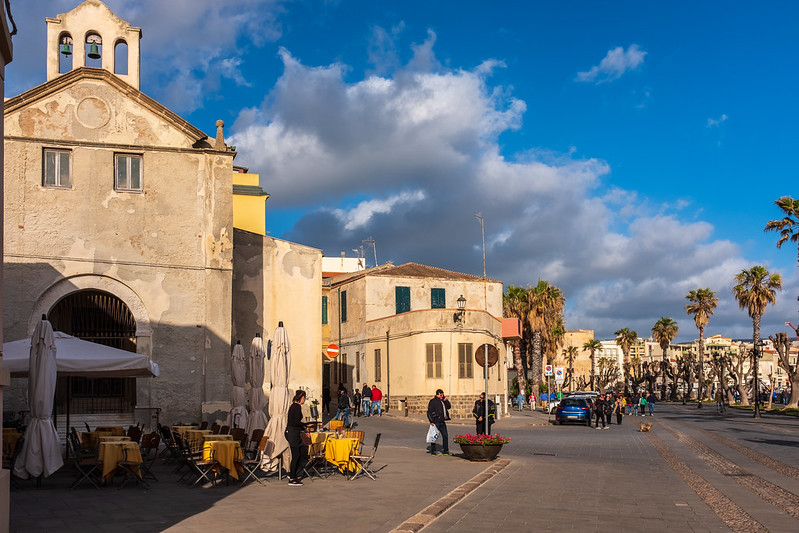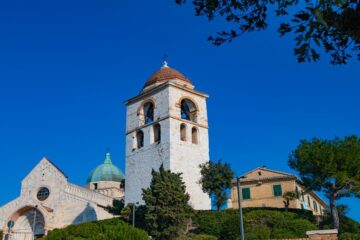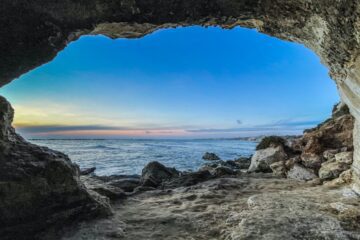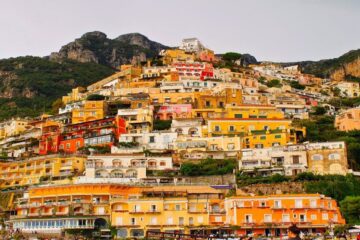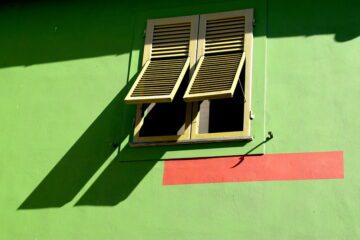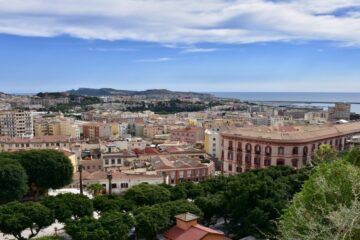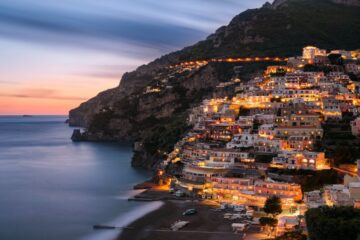Sardinia is a stunningly beautiful island in the Mediterranean Sea. It’s known for its pristine beaches and crystal-clear waters, and attracts visitors from around the world. But what is the cost of living in Sardinia compared to other cities in other countries? In this blog post, we’ll take a look at the costs associated with living in Sardinia, from housing to healthcare, and how to save money while living there.
Introduction to Sardinia
Sardinia is located off the coast of Italy, and is the second-largest island in the Mediterranean Sea. It covers an area of 24,090 square kilometers and has a population of 1.7 million people. The island is home to some of the most beautiful beaches in the world and is a popular vacation spot for tourists. The island is also known for its cultural and historical sites, including the ruins of Nuraghe, the Nuragic civilization’s ancient stone towers.
The climate in Sardinia is temperate, with hot summers and mild winters. The island is known for its Mediterranean vegetation, including olive groves, vineyards, and almond and fig trees. The island is also home to some of the best seafood in the world, with fresh fish and shellfish caught daily from the Mediterranean Sea.
Cost of living in Sardinia compared to other cities
When it comes to comparing the cost of living in Sardinia with other cities, it’s important to look at both the cost of living index and the purchasing power index. The cost of living index measures the cost of goods and services in a city compared to the average of other cities. The purchasing power index measures the amount of money an individual has to purchase goods and services in a city compared to the average of other cities.
When looking at the cost of living index for Sardinia, the island ranks fairly high, with a score of 93.8 compared to the average of 100. This means that the cost of living in Sardinia is higher than the average of other cities, making it a more expensive place to live.
The purchasing power index, on the other hand, is much lower, with a score of just 68.7 compared to the average of 100. This means that an individual’s purchasing power in Sardinia is lower than the average of other cities, making it a more expensive place to live.
Housing costs in Sardinia
Housing costs in Sardinia are high, especially in the capital city of Cagliari. The average cost of a one-bedroom apartment in Cagliari is €750-900 per month, while a three-bedroom apartment can cost up to €1,500-1,800 per month. Not to mention, costs of housing in other areas of the island are much more affordable, with one-bedroom apartments costing around €500-600 per month and three-bedroom apartments costing around €800-1,000 per month.
The cost of purchasing a home in Sardinia is also high, with prices ranging from €300,000-500,000 for a one-bedroom apartment in Cagliari, and €500,000-1,000,000 for a three-bedroom apartment. The cost of purchasing a home in other areas of the island is much more affordable, with prices ranging from €200,000-400,000 for a one-bedroom apartment and €400,000-800,000 for a three-bedroom apartment.
Transportation costs in Sardinia
Public transportation in Sardinia is fairly affordable and reliable, with buses and trains connecting the major cities on the island. The cost of a single bus ticket is €1-2, while a train ticket is €2-3. There are also taxis available in the major cities, with the cost of a short ride ranging from €5-10.
The cost of owning a car in Sardinia is also relatively affordable, with prices ranging from €5,000-10,000 for a used car, and €15,000-25,000 for a new car. The cost of fuel is also relatively low, with prices ranging from €1.50-2.00 per liter.
Trending article: Top 10 nudist beaches of Italy – Our collection
Food costs in Sardinia
The cost of food in Sardinia is also fairly affordable, with prices ranging from €2-3 for a meal at a fast-food restaurant, and €10-15 for a meal at a mid-range restaurant. Groceries are also relatively affordable, with prices ranging from €10-20 for a week’s worth of groceries for one person.
The island is also known for its seafood, with fresh fish and shellfish caught daily from the Mediterranean Sea. Prices for seafood range from €10-15 for a kilo of fresh fish, and €5-10 for a kilo of shellfish.
Healthcare costs in Sardinia
Healthcare in Sardinia is provided by the Italian National Health Service, which offers free or low-cost healthcare to citizens of the European Union. Non-EU citizens can purchase private health insurance, with prices ranging from €50-150 per month depending on the coverage.
Prescription drugs are also relatively affordable, with prices ranging from €5-10 for generic drugs and €10-20 for brand-name drugs. Doctor’s visits are also affordable, with prices ranging from €20-30 for a general practitioner and €60-70 for a specialist.
Other costs associated with living in Sardinia
In addition to housing, transportation, food, and healthcare, there are other costs associated with living in Sardinia. These include utilities, such as electricity and water, which can range from €50-100 per month. Internet costs are also relatively affordable, with prices ranging from €20-30 per month.
Other costs associated with living in Sardinia include leisure activities, such as going to the movies or the beach, which can range from €10-20 per activity. Clothing and other items such as electronics can also be expensive, with prices ranging from €50-100 for a new item.
Tips for budgeting and saving money while living in Sardinia
To save money while living in Sardinia, it’s important to budget your expenses and stick to it. Start by creating a budget and tracking your spending to make sure you’re staying within your budget. It’s also a good idea to shop around for the best deals on food, clothing, and other items, as well as compare prices for utilities and other services.
It’s also important to take advantage of the free or low-cost activities available in Sardinia, such as visiting the beach or taking a hike in the nearby mountains. This is a great way to explore the island and save money at the same time.
Moving to Sardinia – step-by-step guide
If you’re planning on moving to Sardinia, there are a few steps you should take to make sure the move is as smooth as possible.
1- First step is to research the cost of living in Sardinia and compare it to other cities. This will help you determine if Sardinia is the right place for you and your budget.
2- Second step is to obtain a visa or residency permit, depending on your nationality and the length of stay. This is an important step and should be done before arriving in Sardinia.
3- Third step is to find a place to live. As mentioned above, housing costs in Sardinia are high, so it’s important to research the different areas of the island and find the best deal for your budget.
4- Fourth step is to research the transportation options and costs. This is important in order to determine the most cost-effective way to get around the island.
5- Fifth step is to research the healthcare options and costs. There are both public and private healthcare options available in Sardinia, so it’s important to research the cost of each option and determine which is best for you.
6- Last step is to research the cost of food and other necessities. Food costs in Sardinia are relatively affordable, but it’s important to compare prices between different stores to make sure you’re getting the best deal.
Trending article: Exploring Porto Ferro Beach & Sardinia’s Nude Beaches
Conclusion
Living in Sardinia can be an enjoyable experience, with its stunning beaches, beautiful scenery, and delicious food. But it’s important to research the cost of living in Sardinia before making the move to make sure it fits within your budget. From housing to transportation to healthcare, the costs associated with living in Sardinia can add up quickly. But with careful budgeting and smart shopping, you can enjoy all that Sardinia has to offer without breaking the bank. So if you’re considering a move to Sardinia, take the time to research the cost of living and you’ll be sure to find the perfect place to call home.

